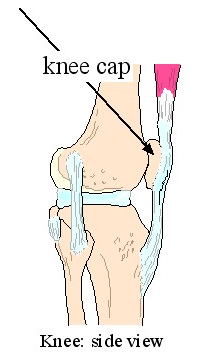 General Remarks
General Remarks
There are many causes of pain around and under the kneecap. This type of knee problem goes by many names depending on the structure injured. There are multiple names for the same condition so it can be confusing. You may have been told that you have one or more of the following conditions: Runner's Knee, Jumper's Knee, Patellar Tendinitis, Patellar Tracking Dysfunction, Chondromalacia Patella, Patellofemoral Syndrome, Patellar Dysfunction or Patellofemoral Arthralgia.
Definition what is it
These problems are grouped together however because they occur most commonly due to misalignment of the bones in the legs and feet and muscle imbalances in the same area. Thus they occur basically for the same reason. For efficient knee motion, your knee cap (Patella) should glide smoothly and in line with a groove created specifically for it in your thigh bone. When the knee cap does not glide smoothly in this groove, irritation occurs in the soft tissues and muscles around the knee as well as to the cartilage underneath the knee cap. The cartilage under the knee cap cracks softens and wears out. This is called Chondromalacia (cartilage softening). There are many reasons why the knee cap may not glide straight in line with its groove. This could be due weakness and tightness in the thigh muscles and hip muscles. Another very common cause is malfunction of your feet (this is called pronation and supination) when your foot is to flat or too arched. This improper foot mechanics affects the knee.
What does it feel like to have this condition?
You have pain around and under the knee cap. The pain may be worse when you walk down stairs and less when you walk up stairs. You also may have pain when you sit with your knee bent for some time. Straightening the knee may relieve the pain temporarily. Active people who walk, run or jump a lot tend to get this problem but more sedentary folks can get it as well. Sometimes you may have no pain when you walk and run, but then you get pain when you rest. This is usually in the beginning of the problem. As the condition gets worse you get pain with activity.
How do we diagnose this condition?
This condition is diagnosed by taking a full medical history of your complaint as it related to your pain pattern, activity level and other medical problems you may have. Dr. Schwartz will perform orthopedic tests that isolate the knee cap and the surrounding structures. He will use orthopedic tests as well to rule out that other knee structures are causing or contributing to your problem. X-ray may be exposed to look at the exact position of the knee cap. MRI examinations may show wearing of cartilage.
Our treatment
Treatment focuses on correcting misalignments of the knee cap and the other bones, and strengthening and stretching tight or weak muscles. We also focus on relieving the pain. For pain relief we use; rest, ice, ultrasound and electrical stimulation. These methods of treatment also decrease swelling which is usually minimal in this problem. Taping the patella in place with encourage proper movement of it. Strengthening and stretching the thigh muscles will relieve strain on the knee cap and the surrounding muscles. Exercises for the feet and possibly orthotics (specifically designed shoe inserts) for the feet will encourage proper foot function relieving the strain at the knee.